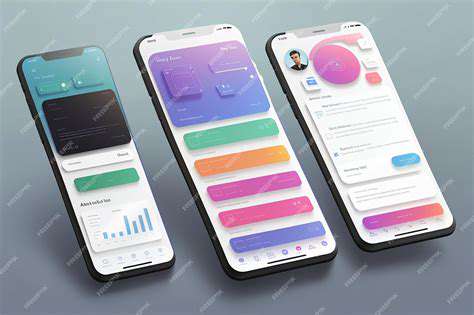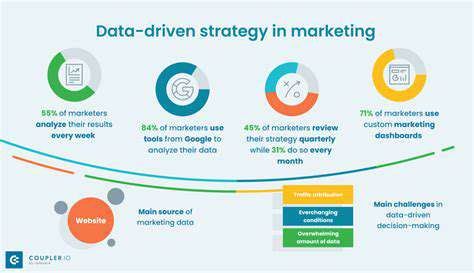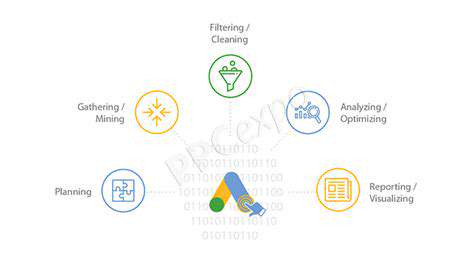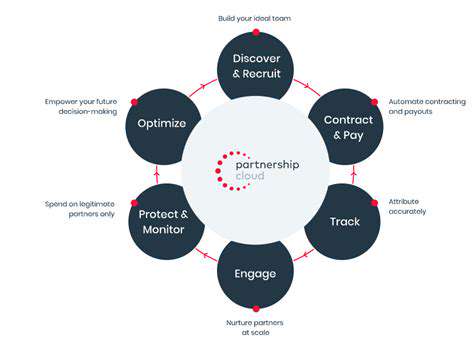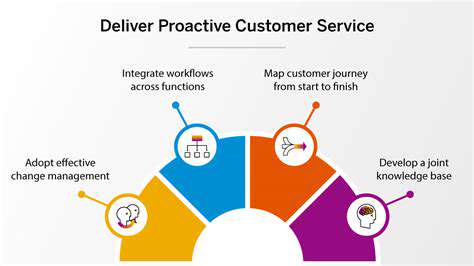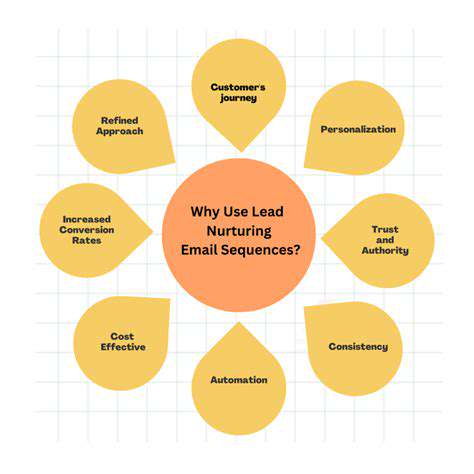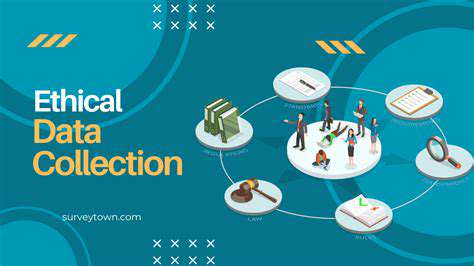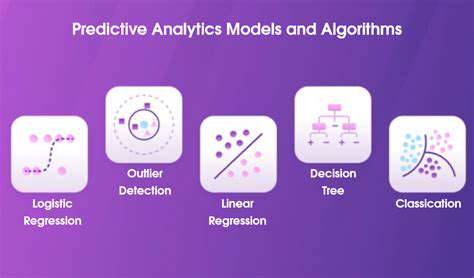Building a Cross Functional Growth Team
Project Lead
The project lead is the central figure in any cross-functional team, acting as the primary point of contact and driving force behind the project. Their responsibilities extend beyond task allocation to encompass strategic direction, risk mitigation, and maintaining clear communication channels across all team members and stakeholders. A successful project lead not only understands the technical aspects of the project but also excels at fostering collaboration and resolving conflicts that inevitably arise in diverse teams. This role requires exceptional leadership and communication skills to ensure the project stays on track and meets its objectives.
Product Owner
The product owner is crucial for translating business needs into actionable tasks for the development team. They are deeply familiar with the product vision and user needs, ensuring that the team focuses on building the right features and functionality. This role demands excellent communication skills, a strong understanding of the product, and the ability to prioritize tasks effectively. The product owner acts as the voice of the customer, bridging the gap between the business and the development team to ensure the project aligns with overall business goals.
Technical Lead
The technical lead plays a vital role in guiding the technical implementation of the project. They are responsible for ensuring the team adheres to coding standards, architectural guidelines, and best practices. This involves providing technical guidance, troubleshooting issues, and ensuring the team's codebase is maintainable and scalable. Their technical expertise is essential for navigating complex technical challenges and ensuring that the project is delivered in a robust and efficient manner.
UI/UX Designer
A crucial element of any cross-functional team is the UI/UX designer. They are responsible for creating a seamless and user-friendly experience for the end-users of the product. This role involves conducting user research, creating wireframes, designing interactive prototypes, and working closely with the development team to bring the design to life. A successful UI/UX designer possesses strong visual design skills, an understanding of user-centered design principles, and the ability to translate complex information into intuitive and engaging interfaces.
Quality Assurance (QA) Specialist
The QA specialist is essential for ensuring the quality and reliability of the product before its release. Their responsibilities include creating and executing test plans, identifying bugs, and ensuring the product meets established quality standards. This role demands meticulous attention to detail, a strong understanding of testing methodologies, and the ability to work effectively in a fast-paced environment. A QA specialist plays a critical role in preventing errors and ensuring the end-product meets the highest standards of quality before launch.
Establishing Effective Communication Channels: Fostering Collaboration
Defining Clear Communication Protocols
Establishing clear communication protocols is paramount to fostering a collaborative environment. These protocols should outline the preferred methods of communication for different types of information. For instance, urgent matters requiring immediate response might necessitate phone calls or instant messaging, while less time-sensitive updates could be disseminated via email or project management software. Defining these channels ensures that crucial information is not overlooked and that team members are aware of the most appropriate method for each situation. This clarity prevents miscommunication and wasted effort, ultimately streamlining workflows and enhancing productivity across the entire team.
Furthermore, protocols should specify response times for various communication channels. This expectation of timely responses fosters a sense of accountability and ensures that inquiries are addressed promptly. A well-defined protocol also clarifies escalation procedures, outlining the steps to take if a particular issue isn't resolved within a given timeframe. This structured approach ensures that problems are addressed efficiently and effectively, minimizing delays and potential conflicts.
Utilizing Technology for Enhanced Collaboration
In today's digital age, leveraging technology is crucial for establishing effective communication channels. Utilizing project management software, for example, allows team members to access shared documents, track progress, and collaborate seamlessly. This centralized platform facilitates transparency and keeps everyone informed about ongoing tasks and deadlines. Furthermore, tools like instant messaging or video conferencing can facilitate real-time discussions, fostering quicker problem-solving and improved team cohesion.
Beyond project management software, incorporating communication platforms designed for team collaboration can significantly enhance productivity. These platforms typically offer features like file sharing, discussion forums, and task assignment, creating a unified space for all team members to interact and collaborate efficiently. By integrating these technological tools into the workflow, teams can experience a more streamlined and effective approach to communication and collaboration.
Implementing a robust system for file sharing is another critical element of utilizing technology for enhanced communication. This system should ensure that all relevant documents are readily accessible to authorized team members, while also maintaining the confidentiality of sensitive information. This approach enhances efficiency by preventing delays in accessing necessary materials and ensures that everyone is working with the most up-to-date information.
Employing video conferencing tools can significantly bridge geographical distances, facilitating face-to-face interactions even when team members are located in different parts of the world. These tools can foster a stronger sense of community and facilitate more natural interactions, which can lead to improved problem-solving and a more cohesive team dynamic.
Integrating these technologies into the team's communication strategy is essential for achieving seamless collaboration and maximizing productivity. The right tools can significantly enhance communication, reduce misunderstandings, and create a more efficient and effective work environment.
Implementing these technologies can lead to greater efficiency and improved outcomes.
The current global economic climate is characterized by a complex interplay of factors, ranging from rising inflation and interest rates to geopolitical tensions and supply chain disruptions. These intertwined challenges are impacting economies worldwide, leading to uncertainty and volatility in financial markets. The interconnected nature of global trade and finance means that a crisis in one region can quickly ripple through the entire system. This necessitates a proactive and coordinated response from policymakers and businesses alike to navigate these turbulent waters.
Building a Growth-Focused Culture: Empowering Individuals

Cultivating a Growth Mindset
A growth-focused culture isn't built overnight; it's a deliberate and ongoing process that requires a shift in mindset. Employees need to embrace the idea that their abilities and intelligence can be developed through dedication and hard work. This fosters a proactive approach to learning and improvement, encouraging individuals to view challenges as opportunities for growth rather than obstacles. A key aspect of this mindset involves celebrating effort and progress, not just outcomes.
Creating a safe environment where people feel comfortable taking risks and experimenting with new ideas is crucial. This means offering support and constructive feedback to help employees navigate their learning journey, and reframing mistakes as valuable learning experiences. Acknowledging and appreciating the efforts of individuals, no matter the outcome, is essential in fostering this mindset.
Promoting Continuous Learning and Development
Investing in employee development shows a commitment to their growth and future with the company. Offering opportunities for training, workshops, mentorship programs, and access to relevant resources empowers employees to enhance their skills and knowledge. This proactive approach to learning and development not only benefits individual employees but also strengthens the overall team and company performance.
Encourage employees to explore new skills and knowledge related to their roles and the industry. This can involve attending conferences, reading industry publications, taking online courses, or participating in internal knowledge-sharing sessions. Providing a budget for professional development and creating a culture that values continuous learning will lead to a more engaged and competent workforce.
Fostering Collaboration and Communication
A collaborative environment where employees feel comfortable sharing ideas and working together is essential for a growth-focused culture. Open communication channels and regular team meetings can facilitate knowledge sharing and collaboration. Encouraging cross-functional collaboration can lead to innovative solutions and a deeper understanding of different perspectives within the company.
Promoting transparent communication across all levels of the organization is key. Establish clear communication protocols and ensure that information is shared effectively and efficiently. This fosters trust and understanding among team members, leading to more effective problem-solving and better decision-making.
Recognizing and Rewarding Growth
Recognizing and rewarding employee efforts and achievements is crucial for reinforcing a growth-focused culture. Formal and informal recognition programs can motivate employees to strive for continuous improvement. This can include public acknowledgments, bonuses, promotions, or opportunities for advancement. Regular feedback and performance reviews that focus on progress and improvement will reinforce the message that growth is valued.
Implementing a system for recognizing and rewarding contributions beyond traditional metrics can also be valuable. This might include celebrating milestones, acknowledging innovative ideas, or rewarding team achievements. A culture that celebrates the journey of learning and growth will inspire employees to continuously develop and improve.
Measuring and Adapting: Tracking Progress and Iterating
Defining Performance Metrics
A crucial first step in tracking performance is defining clear and measurable metrics. These metrics should align with the overall goals of the project or initiative, providing a quantifiable way to assess progress and identify areas needing attention. Clearly defining these metrics ensures consistent measurement and reliable data analysis. This avoids ambiguity and allows for a more objective evaluation of performance.
Establishing specific, measurable, achievable, relevant, and time-bound (SMART) goals is essential. For example, instead of simply aiming for increased sales, a SMART goal might be increase sales by 15% in the third quarter compared to the previous quarter. Such well-defined metrics provide a roadmap for success and allow for targeted interventions when needed.
Establishing Baselines and Benchmarks
Before tracking performance, it's vital to establish a baseline. This involves gathering data on current performance levels. This baseline acts as a reference point for measuring progress over time. It provides a crucial starting point for identifying areas for improvement and assessing the effectiveness of any interventions implemented.
Comparing performance against benchmarks is another key aspect of establishing a baseline. Benchmarks can be internal, comparing performance against previous periods or departmental averages, or external, comparing performance against industry standards or competitors. This comparison provides context and helps to understand how the organization performs in relation to others.
Tracking Progress and Identifying Trends
Regular tracking of performance metrics is essential to identify trends and patterns. This involves consistently collecting data and analyzing it to understand how performance is evolving over time. Consistent monitoring allows for early identification of potential problems or opportunities. Identifying trends early can allow for proactive adjustments to strategies or resource allocation.
Visualizations, such as charts and graphs, can be incredibly helpful for quickly identifying patterns and trends in the data. Effective visualizations transform complex data into easily understandable insights, empowering stakeholders to make informed decisions based on clear and concise information. This allows for timely interventions and course corrections.
Adapting Strategies Based on Data
Performance tracking isn't just about gathering data; it's about using that data to adapt and improve. Regular analysis of the collected data should inform adjustments to strategies, processes, or resource allocation. Adapting to changing circumstances is critical for sustained success. By examining the trends and patterns, organizations can identify what's working and what isn't, and tailor their approaches accordingly.
Data-driven decision-making ensures that resources are allocated effectively and that strategies remain relevant to the evolving needs and challenges. Implementing changes based on these insights allows for improved outcomes and increased efficiency.
Implementing Feedback Loops and Continuous Improvement
Continuous improvement is a cornerstone of effective performance management. Implementing feedback loops allows for the incorporation of lessons learned from performance data into future strategies. Gathering feedback from various stakeholders and incorporating it into subsequent performance cycles is a critical component of sustained growth. This continuous evaluation and refinement process creates a dynamic environment where adjustments are made based on real-time information.
Regular reviews of performance metrics and adjustments to strategies ensure that the organization remains aligned with its goals. This iterative approach to performance management fosters a culture of learning and growth, leading to optimized resource allocation and improved results over time.
Read more about Building a Cross Functional Growth Team
Hot Recommendations
- Personalizing Email Content with User Behavior
- Geofencing for Event Attendance Tracking
- Reputation Management on Social Media
- UGC Beyond Photos: Videos, Testimonials, and More
- The Future of Data Privacy Regulations
- Accelerated Mobile Pages (AMP) Benefits and Implementation
- The Future of CRM: AI and Voice Integration
- Google Ads Smart Bidding Strategies: Maximize Value
- Common A/B Testing Pitfalls to Avoid
- Local SEO Strategies for Small Businesses

